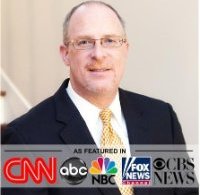
I divide the insurance market between “third-party insurers” and “captives.” The former are large, publicly-traded insurance companies. “Asset-liability management” — the science (or art, depending on your perspective) of timing the payment of liabilities with investment income — forces this group of companies to favor predictable risks. For example, suppose an insurer has a claim payable in 12 months. Their investment department will purchase an asset that will mature when the claim comes due. Unpredictable risks complicate this relationship, explaining why the large insurers shy away from these policies.
(If you’d like to learn more about this discipline, please see Frank Fabozzi’s Asset Liability Management).
Enter captive insurers, who often lead the way in the insurance market by underwriting new and exotic events. The Ocean Drilling case offers a prime example:
During the 1960’s plaintiff faced difficulties insuring its drilling rigs. At that time the drilling rig business was written predominately by the Lloyd Syndicate (“Lloyd’s”), with the London Market serving as an ancillary market to Lloyd’s. As the technology of drilling rigs developed rapidly, Lloyd’s adjusted its insurance rates in an attempt to cover itself against potential losses from the new drilling rigs. Because of the limited experience in insuring the new rigs and a number of substantial losses on these rigs, insurance rates increased sharply. By the end of the 1960’s, rates were as high as 10 percent of the value of insured vessels, and plaintiff was unable to obtain full coverage of its rigs through the existing insurance market. In response to this dilemma, plaintiff analyzed its history of premiums and losses and determined that establishment of a captive insurer could alleviate the problems that plaintiff faced in the insurance market. In 1968 plaintiff established Mentor as a wholly-owned subsidiary incorporated in Bermuda.
A recent article in Business Insurance provides an excellent example of how a captive could provide coverage for a new risk: driverless cars:
Captive insurers can be a solution to cover the emerging risks presented by driverless cars that traditional insurers have either been slow to respond to or have quoted unacceptably high premiums for.
There are about 1.2 billion vehicles on the road worldwide, with more than 1.2 million fatalities per year, said Christine Kogut, a principal for Milliman Inc. based in South Burlington, Vermont.
“The thought is that driverless and connected vehicles can eliminate all of the negatives that we have now,” she said. “They can help us be safer, save energy, cut pollution, increase the city capacity without adding concrete, and they can provide mobility to millions of people that don’t have access to transportation. The endgame is that we can be safer and more productive, and our mobility can be more personalized, more affordable and more convenient, which is what all of us really want.”
The driverless car scenario is very similar to Ocean Drilling: each insured encountered higher than desired premiums due to the newness of the risks involved. This opens the market up to captives
So, if your company has a new and hard to place risk, please contact us at 832.330.4101 to learn more.


















Recent Comments